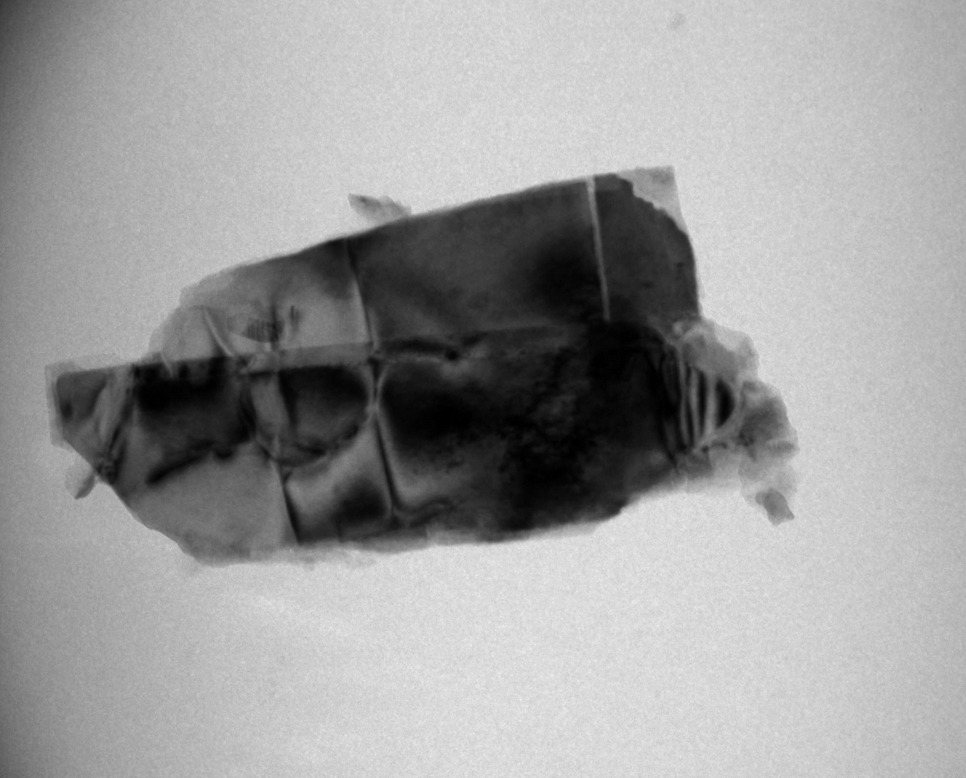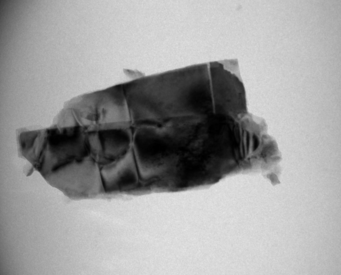Study of Praseodydimium doped oxides
Our research is dedicated to the study of Praseodymium (Pr) doped into KCa2Nb3O10 as the semiconductor host and aims at acquiring the transition spectra with two nominal different Pr concentration. All the particles are micrometer sized and were synthesized by our collaborative partners of Max-Planck-Institute of solid state research, Stuttgart. Investigation of the samples is mainly done with electron microscopy and related techniques such as Scanning electron microscopy (SEM), Transmission electron microscopy (TEM), Energy dispersive X-ray spectroscopy (EDX) and Cathodoluminescence (CL).

Figure 1: SEM image of a Pr doped particle
The Pr doped particles show a facetted morphology as shown in the SEM image. Differences in chemical composition such as changes in Pr to Nb ratio lead to different transition peaks observed by CL. Our goal is to determine the distribution of the different elements by STEM/EDX and to identify the local environment responsible for the transition peaks.
The CL spectra of the host indicate the presence of defects such as grain boundaries which are confirmed by TEM investigations. Understanding the nature of these grain boundaries and their chemical composition is our main interest in order to interpret the observed transitions in the CL data.

Figure 2: TEM image of a host particle
